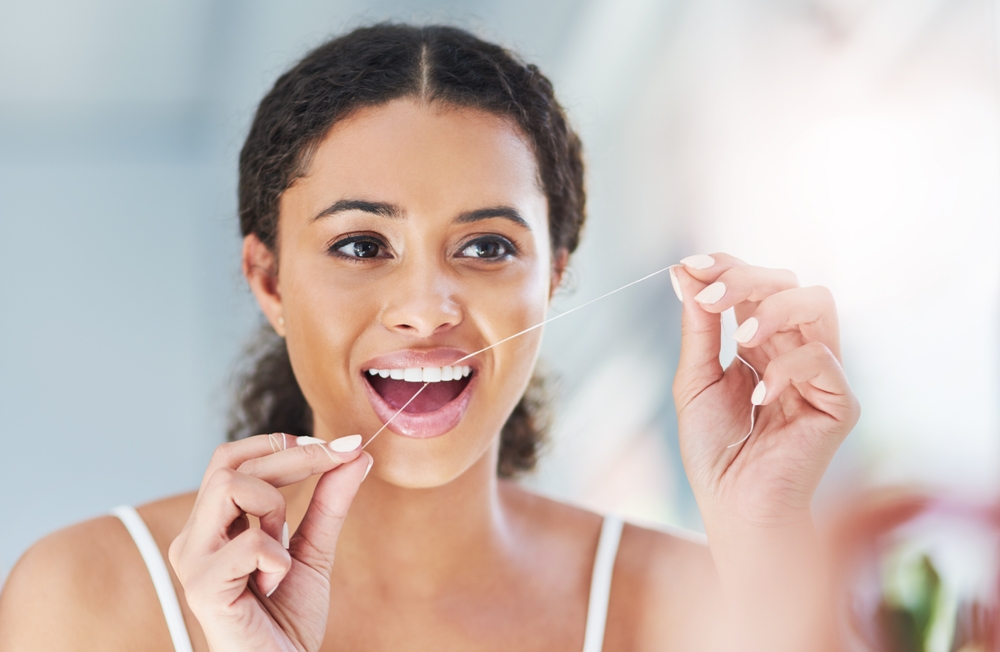When it comes to maintaining a healthy smile, most of us know that brushing and flossing are essential, but the question remains: should you brush first or floss first? It’s a surprisingly common debate among dental patients and even within the dental community. The order may seem like a small detail, but it can actually impact how effectively you remove plaque and protect your teeth from decay and gum disease. In this blog, we’ll explore what dental experts have to say about brushing vs. flossing order, what the research shows, and how you can make the most of your oral hygiene routine for a cleaner, healthier mouth.
In This Blog:
- The Importance of Daily Brushing and Flossing
- Why the Order of Your Routine Might Matter
- Expert Opinions: What Dentists Recommend
- The Case for Flossing Before Brushing
- The Case for Brushing Before Flossing
- What the Research Says
- Tips for Maximizing Your Oral Hygiene Routine
The Importance of Daily Brushing and Flossing
A strong oral hygiene routine is the foundation of a healthy smile. Brushing and flossing work together to remove plaque, which is a sticky film of bacteria that can lead to tooth decay, gum disease, and bad breath if left unchecked.
Brushing helps clean the visible surfaces of your teeth, removing food particles and plaque buildup, especially along the gumline. The American Dental Association (ADA) recommends brushing at least twice a day with a soft-bristled toothbrush and fluoride toothpaste.
Flossing, on the other hand, reaches the tight spaces between your teeth and under the gum line, which areas your toothbrush can’t easily access. Daily flossing helps prevent cavities between teeth and reduces the risk of gingivitis and periodontal disease.
When done properly and consistently, brushing and flossing not only keep your mouth clean but also contribute to your overall health by reducing bacteria that can enter the bloodstream and affect other parts of the body.
Why the Order of Your Routine Might Matter
At first glance, the order of brushing and flossing might seem trivial. After all, if both are done daily, shouldn’t the results be the same? Not necessarily.
The sequence of these two habits can influence how effectively you remove plaque and how well fluoride from your toothpaste coats and protects your teeth. When you floss, you loosen and remove particles and bacteria from between your teeth. If you floss after brushing, you may leave behind debris and reduce the fluoride’s ability to reach those freshly cleaned spaces.
Conversely, brushing first can help remove most plaque and soften debris, potentially making flossing easier afterward. The key question, then, is: which method provides the best cleaning results and fluoride protection? Let’s see what dental experts have to say.
Expert Opinions: What Dentists Recommend
Most dental professionals agree that the order does matter, but their recommendations may vary depending on personal experience, patient needs, and interpretation of research.
According to the American Academy of Periodontology and other oral health experts, flossing before brushing tends to be more effective for plaque removal and maximizing fluoride exposure. When you floss first, you dislodge plaque and food particles, allowing the fluoride in your toothpaste to better reach between your teeth during brushing.
Many dentists emphasize that this approach can also help patients feel more thorough and motivated to maintain a complete routine. However, some hygienists argue that brushing first can make flossing easier by softening plaque and removing surface debris, making the flossing process smoother for patients who struggle with technique.
Ultimately, while experts slightly favor flossing first, they all agree on one crucial point: it’s far more important that you both brush and floss daily, no matter the order.
The Case for Flossing Before Brushing
Flossing before brushing has become the preferred order for many dental professionals for good reason. When you floss first, you remove plaque and trapped food particles from between your teeth and under the gumline. This step clears the way for your toothbrush and toothpaste to do their job more effectively.
Studies have shown that flossing before brushing can lead to lower levels of interdental plaque and higher fluoride concentration between teeth compared to brushing first. Once the spaces between your teeth are clean, the fluoride in your toothpaste can better penetrate and strengthen enamel where decay often begins.
Another benefit? Fresher breath. By dislodging food debris and bacteria before brushing, you reduce the potential for lingering odors. For patients who struggle with gum sensitivity or bleeding, flossing first can also help bring attention to problem areas that may need extra care.
In short, flossing before brushing allows you to maximize the protective effects of fluoride, improve overall plaque removal, and create a cleaner, healthier mouth.
The Case for Brushing Before Flossing
While flossing first has gained popularity, some patients and hygienists still prefer brushing before flossing for its benefits.
Brushing first removes the majority of surface plaque and food particles, which can make flossing easier and more comfortable afterward. This order can also help patients who struggle to maintain motivation; brushing first provides that “clean mouth” feeling that encourages follow-through with flossing.
Additionally, brushing before flossing can help soften and loosen plaque, especially when using an electric toothbrush, making it simpler for floss to glide between teeth. For individuals who use mouthwash, this sequence (brush → floss → rinse) can ensure the mouthwash reaches between teeth and under the gumline, sweeping away any remaining debris.
While not necessarily the most fluoride-efficient method, brushing first can still produce excellent oral health outcomes, especially when performed thoroughly and consistently.
What the Research Says
Scientific evidence has helped settle this debate, at least to some degree. Research published in the Journal of Periodontology found that participants who flossed before brushing had significantly less plaque and higher concentrations of fluoride in interdental spaces than those who brushed first.
These findings suggest that flossing first improves the overall cleaning efficiency of brushing and enhances fluoride’s cavity-fighting power. The American Dental Association also supports this sequence, noting that it helps remove debris before brushing, allowing for more effective fluoride coverage.
However, researchers also emphasize that consistency matters more than order. Patients who floss and brush daily, regardless of sequence, see dramatically better gum health and reduced risk of decay than those who skip flossing altogether.
Tips for Maximizing Your Oral Hygiene Routine
No matter which order you choose, good technique is key to achieving a healthy smile. Here are a few tips to make the most of your daily routine:
- Use the right tools: Choose a soft-bristled toothbrush and fluoride toothpaste. For flossing, pick a waxed or unwaxed floss that feels comfortable, or try a water flosser or interdental brushes if you find traditional floss difficult to use.
- Take your time: Brush for at least two minutes twice a day, and floss gently between each tooth, curving the floss into a “C” shape against each surface.
- Don’t skip fluoride: Fluoride helps remineralize enamel and prevent decay, so make sure your toothpaste or mouthwash contains it.
- Stay consistent: The best routine is one you’ll actually stick to. Whether you floss before or after brushing, make it a daily habit.
- See your dentist regularly: Professional cleanings and checkups help remove tartar buildup and catch early signs of gum disease or decay.
By following these steps and maintaining consistency, you can ensure your smile stays bright, strong, and healthy for years to come.
Conclusion
When it comes to the question of whether to brush or floss first, the consensus among dental experts leans slightly toward flossing before brushing, mainly because it enhances fluoride effectiveness and overall plaque removal. However, the most important thing is not the order itself, but consistency and technique. Whether you choose to floss first or brush first, doing both every day is the key to preventing cavities, reducing gum inflammation, and keeping your smile bright and healthy. Pair your routine with regular dental checkups and cleanings, and you’ll be well on your way to excellent oral health.
At Smile Drs. in Cromwell, CT, our dental team is passionate about helping patients achieve and maintain healthy, beautiful smiles through personalized care and education. Whether you need a routine cleaning, a restorative treatment, or expert advice on improving your oral hygiene routine, we’re here to help every step of the way. Schedule your next dental appointment today at Smile Drs. and let our experienced team guide you toward a lifetime of confident, healthy smiles.



